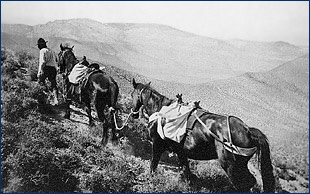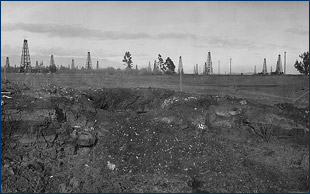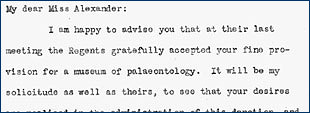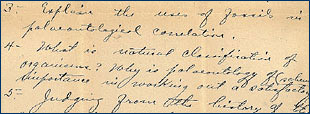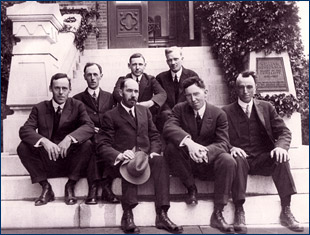UCMP Archival Collections
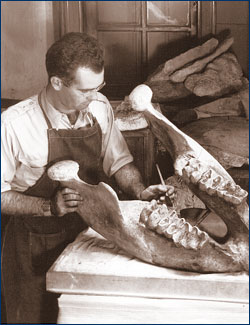 A Works Progress Administration worker cleans up the jaw of a large extinct mammal, ca. 1933 |
|
The University of California Museum of Paleontology houses not only fossils, but a sizable collection of printed material, images, and memorabilia. These are important both for paleontological research and for documenting the history of the Museum and of paleontology in general.
Library Holdings
The Museum maintains a collection of over 10,000 paleontological reprints, plus numerous books, journals, and monographs, covering all aspects of paleontology, and including rare and important items. Most of these were donated by faculty and staff members — for example, professor emeritus Wayne Fry has donated his paleobotanical library, and museum scientist Donald Savage, his reprint collection. In addition, the Museum acquired the library of the late micropaleontologist Alfred R. Loeblich, Jr., one of the world's most extensive private collections of micropaleontological literature. These resources complement the extensive paleontological holdings of the UC-Berkeley Biosciences and Natural Resources Library.
The Museum also maintains a catalog of Museum publications (those published by Museum-affiliated scientists and/or based on fossils in UCMP's collections).
The paleontological reprint collection is catalogued on index cards and is not yet available in computer format. Most of the books, journals, and monographs have not been catalogued at all, and are simply shelved by subject area. All printed material is kept in the collections area, and may be used by UCMP staff or UCMP-sanctioned researchers. It is generally not available for long-distance loan, although reprints of Museum publications may be requested while stocks last.
Archival Collections
The UCMP Archives contain thousands of original drawings and photographs, newspaper clippings, maps, field notes, and personal papers and correspondence of prominent paleontologists affiliated with the Museum. Of particular interest is a collection of photographs of the paleontological artwork of William Gordon Huff, who sculpted the paleontological exhibits for the Golden Gate Exposition of 1939 and 1940. Most of these represent artworks that are now missing and presumed destroyed. Also of interest to paleontologists is UCMP's field note collection, which documents many fossil localities that are now lost or destroyed.
Field notes are maintained in the UCMP locality files, and are not normally made available except to qualified researchers. Much of the rest of the archival material is uncatalogued, and is now in some disarray. An effort to catalogue this material is underway; when it is completed, we anticipate that this collection will be an important resource for the history of American paleontology.
Online Photographs
In 2003, UCMP began adding images from the archives to our online collections database. Although the bulk of those uploaded to date are specimen images, we are also adding historical and modern field photographs. UCMP localities represented at present are Black Hawk Ranch, California and Canjilon, New Mexico.
Some Items from the Archives
Below is a small sample of the treasures of our archives, to give the flavor of what's there and also to present a little about our Museum's history.
UCMP holds the papers of a number of paleontological personages. These papers may include correspondence, field notes, slides, and other documents. Historians and other researchers may be granted access to these collections — click on any of the four boxes below for more information.
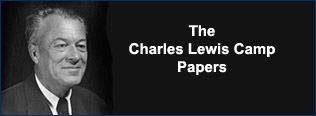 |
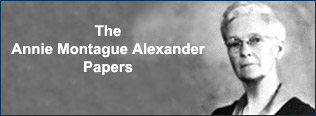 |
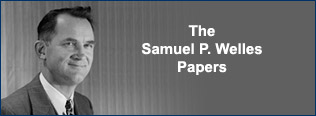 |
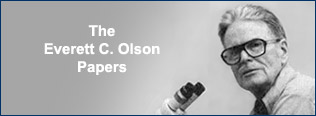 |
|
|
|
|
|
|
|
